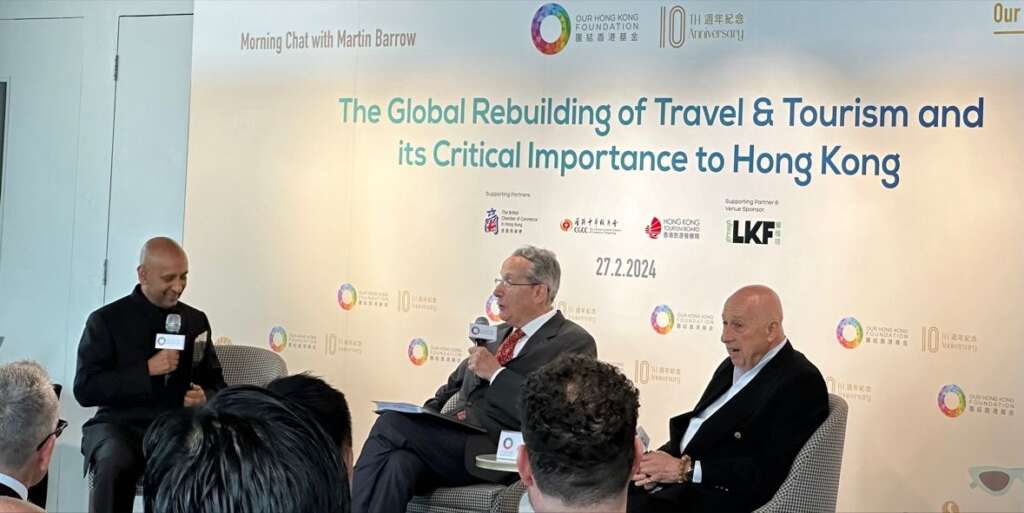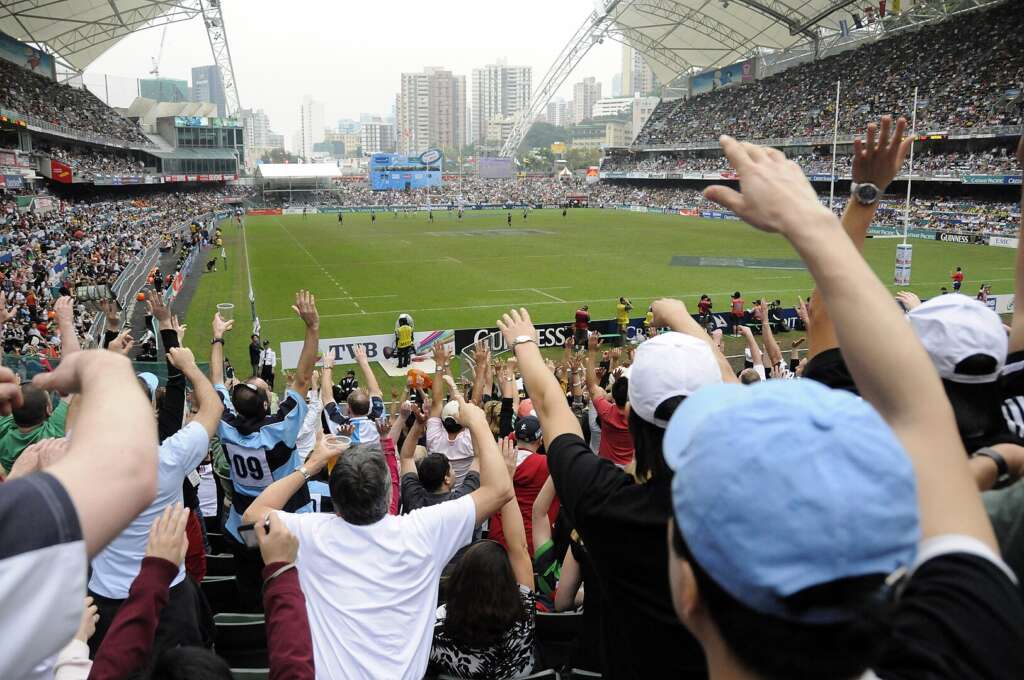Hong Kong tourism is set for a major revival in the medium term—as the city is sitting on the doorstep of the world’s biggest “new” middle class.
Mainland China already has more middle class people than all the countries of western Europe and North America put together.
THE INTERNATIONAL and local community of Hong Kong were in fighting mode earlier this week, as some of the brightest minds in the city gathered recently to brainstorm on an urgent issue: how do we work to revive the tourism industry, and get the truth out to the world about our home? Seven ideas are listed below.
But first, the setting. It was a high-powered discussion. This writer was moderator, and the main speakers were Martin Barrow, formerly a Jardine Matheson head honcho and tourism leader; and Allan Zeman, one of Hong Kong’s best known business people. Also present were Bernard Chan from the government, Paul McComb from the British Chamber of Commerce, Julie Haberl from the European Chamber of Commerce, Jane Lee from Our Hong Kong Foundation, columnist Mike Rowse and many others.

DYSTOPIAN IMAGE
The lively discussion produced a flood of ideas for an action plan to draw more visitors and combat the negativity about the city.
There was general agreement that the dystopian image painted of our lively community abroad was dramatically at odds with reality, and very harmful.
Many people overseas genuinely believed that Hong Kong was a dangerous place where no one could express an opinion and arbitrary arrests were being made.
The blame did not entirely rest with the media. Some governments had issued travel advisories saying that Hong Kong was an unsafe place where tourists could be arbitrarily arrested, although this was untrue. There was no arbitrary arrests, and the US and UK detain far more people under security laws than Hong Kong has ever done.
Martin Barrow said he was continually asked by people in London as to whether Hong Kong was safe—and knew exactly what to reply: “Staying in London is ten times more dangerous than going to spend time in Hong Kong.”

But while nothing could be done about western governments and media, there was a lot of positivity found elsewhere, with Hong Kong’s trade shows and international conferences doing well, as Allan Zeman pointed out. “The convention center is booked up every day.”
PRACTICAL IDEAS
By the end of the session, which was organized by Our Hong Kong Foundation, speakers and audience members had come up with many ideas. Here are seven:
1) The countries of North America and Western Europe only number 500 million people, while Asia contains 4.5 BILLION people. These closer markets can be more of a focus for us—and all of them were in growth mode with an expanding middle class, mostly growing much faster than western countries.
2) And at the same time, we can also continue to welcome people from the west, with events like the Rugby Sevens—a uniquely Hong Kong party which many places had tried to replicate, unsuccessfully.

3) The new Kai Tak Sports Park will be the biggest, newest, best-equipped sports facility in Asia—perfect for major international events like the Olympics or the Asian Games—and a superb venue for visiting pop stars or other performers.
4) Our community is known for its efficiency, so we can organize many major events, and we should also do some genuinely MEGA events, attendees said.
5) Our museum and arts centers are world class. The Hong Kong Palace Museum is filled with priceless works of art from China and around the world. Furthermore, Hong Kong has overtaken London as an art investment center—so culture will definitely be a key attraction in the medium and long term.

6) While international politicians and media have a downer on Hong Kong, the business community is much more upbeat—there are about 300 conferences and trade shows booked for the convention center, indicating very healthy business interest across a wide range of sectors. This meant that a string of people would be coming to Hong Kong on a daily basis to work.
7) Mainland authorities have been encouraging more tourism to Hong Kong, a move which is being extended further outwards across China—and the biggest middle class on the planet is right on our doorstep.
MAINLAND TOURISTS
Allan Zeman said that the criticism that mainland Chinese tourists don’t spent money, don’t visit the same venues as others, and don’t stay overnight, were too simplistic.
“Some 65 per cent of visitors in Lan Kwai Fong now are from the mainland, our surveys show,” he said.
And the mainland produced a full range of visitors, including daytrippers and the very rich. “We’ve had people spend $450,000 or $500,000 on drinks and things on a single evening,” he added.
While it was true that visitors from Guangdong sometimes make a day trip without making use of Hong Kong hotels, an increasing number were coming from further afield. If you fly in to Hong Kong from Heilongjiang or somewhere, “you can’t get home in a day – you have to use hotels”.
YOU HAVE TO BE HERE
Martin Barrow said that Hong Kong had always been a great place with good business skills but poor marketing ability.
When people actually visited the place, they were charmed by the vibrancy and energy—and told their friends back home.
He recalled doing a survey asking people leaving Hong Kong how many days they had spent here. The average was three.
Then they were asked how many days they would spend here now that they knew what the place was like. The answer doubled to six.

Julia Haberl of the European Chamber of Commerce said that there was definitely something magical about this part of the world. People who visited this region so often wanted to stay here. “I may have been born in Austria but inside I am East Asian,” she said.

